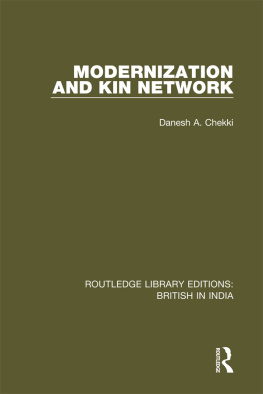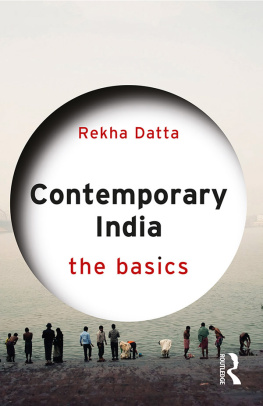First published in 1975 by Garland Publishing, Inc.
This edition first published in 2017
by Routledge
2 Park Square, Milton Park, Abingdon, Oxon OX14 4RN
and by Routledge
711 Third Avenue, New York, NY 10017
Routledge is an imprint of the Taylor & Francis Group, an informa business
1975 Danesh A. Chekki
All rights reserved. No part of this book may be reprinted or reproduced or utilised in any form or by any electronic, mechanical, or other means, now known or hereafter invented, including photocopying and recording, or in any information storage or retrieval system, without permission in writing from the publishers.
Trademark notice: Product or corporate names may be trademarks or registered trademarks, and are used only for identification and explanation without intent to infringe.
British Library Cataloguing in Publication Data
A catalogue record for this book is available from the British Library
ISBN: 978-1-138-22929-7 (Set)
ISBN: 978-1-315-20179-5 (Set) (ebk)
ISBN: 978-1-138-28406-7 (Volume 21) (hbk)
ISBN: 978-1-315-26981-8 (Volume 21) (ebk)
Publishers Note
The publisher has gone to great lengths to ensure the quality of this reprint but points out that some imperfections in the original copies may be apparent.
Disclaimer
The publisher has made every effort to trace copyright holders and would welcome correspondence from those they have been unable to trace.
The Social System and Culture of Modern India:
A Research Bibliography
Edited with an Introduction by
Danesh A. Chekki
I
According to Arnold J. Toynbee, India is a world in itself; it is a society of the same immensity and importance as is our Western society. In global perspective, the immensity, diversity, and unique importance of Indian society and culture can hardly be underestimated. Indias cultural diversity is evident in her various religious, caste, class, linguistic and regional characteristics. Despite its diversity, what strikes us most is the underlying similarity of cultural traits a common ethos that pervades the Indian sociocultural system.1 This reference volume encompasses studies that reflect both the unity and diversity of Indias culture and social system.
As the flood of sociological research on India continues to rise at a tremendous rate, the significance of documentation and keeping an inventory of research on Indian society and culture amounts to almost that of research itself. The two academic disciplines represented here are sociology, and social and cultural anthropology (it excludes physical anthropology and archeology) in their broad connotation as conceived by Talcott Parsons.2 Specifically, sociology is concerned with the analysis of social systems, with special but by no means exclusive reference to the type of social system we call a society, whereas, anthropology is the analytical study of phenomena of culture, 3 of the patterned symbolic meaning systems in and by which social systems and personalities are oriented and guided.
II
This book can be considered as an important indicator of the nature of sociological research output on India during the last quarter of a century or so, since the founding of the modern state of India. We believe, however, that this volume is representative of the numerous studies on Indian society and culture undertaken and/or published during 1947-1972. It was further updated to include studies made in 1973 and 1974, and includes some scheduled to appear in 1975.
An effort to demarcate boundaries of academic disciplines is often difficult and at times this problem becomes insurmountable. An overwhelming majority of the studies documented in this volume fall under the various branches of sociology as manifested in the subject classification used here. Speaking of sociology as an academic discipline, Parsons observes: Not only is there no official sociological point of view, but there is no authoritative catalog, to say nothing of logically symmetrical classification, of sectors and subdivisions of the discipline.4 The scheme of subject classification adopted here is a modified version of the one used by Sociological Abstracts.
Boundaries of academic disciplines are blurred especially when studies emerging from fields such as agriculture, communication, criminology, demography, economics, education, geography, history, health and medicine, industry, indology, law, political science, psychology, religion and social work have been included because of their sociological relevance. The purists may argue for clear-cut demarcation of academic disciplines. Our overriding concern in this volume, however, has been the adherence to an interdisciplinary social science approach.
This bibliography has emerged primarily as a result of my preoccupation with analyses of Indian sociological research since India gained political independence in 1947. In order to review trends of research during the last quarter of a century in India a large body of data was collected. Initially 5,226 entries that were considered contributions to Indian sociology were prepared in bibliographic form. This process involved reading and browsing through a large number of original and secondary sources, which included books, journals, doctoral dissertations, abstracts, bibliographies, reports, papers submitted to conferences and symposia, etc.
The resultant data were not the product of a statistically designed sample but were assumed to be a fairly accurate representation of research that has been undertaken from 1947 to 1972. An effort is made to include a large variety and number of sources with a view to reduce possible biases.
Some types of entries have been excluded from this bibliography because of several problems encountered in the process. For instance, a considerable number of government reports were not examined because of lack of ready access. However, such entries found in other sources were included in this bibliography. The coverage of government reports which contribute to sociology in India is hardly representative. Furthermore, sociological studies published in Indian languages (such as Hindi, Bengali, Gujarati, Marathi, Kannada, Tamil, etc.) were not included because of problems of translation. In this volume about ninety-eight percent of the citations are in English and the remaining are in European languages, viz. Dutch, Finnish, French, German, Hungarian, Italian, Japanese, Norwegian, Polish, Russian, Serbian and Spanish.











